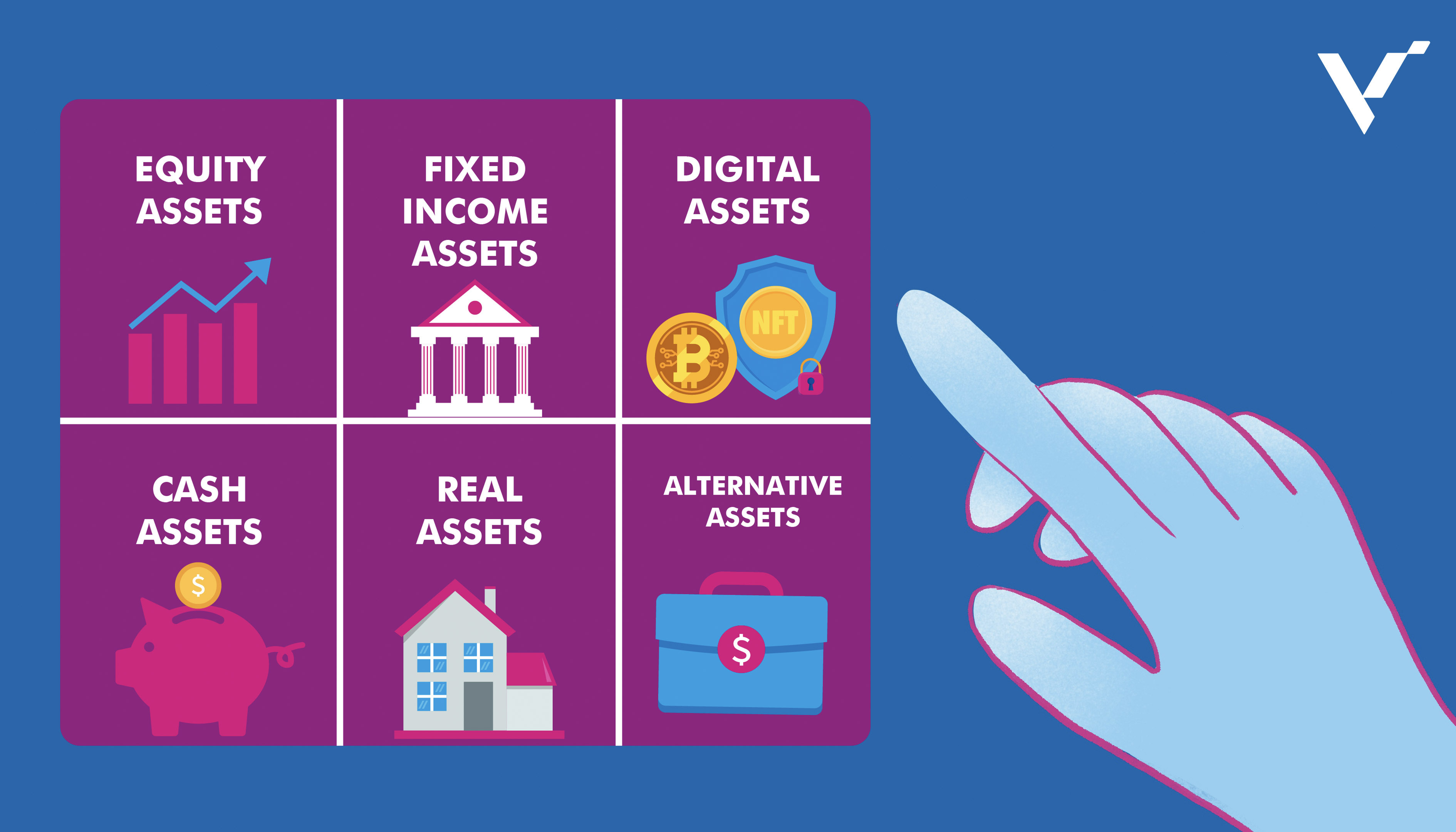6 Asset Classes to Know About
14 Feb 2022

Before you dive into the deep sea called investing, you ought to first prepare your diving gear. In investing, this translates into understanding the basics of asset classes for beginner investors.
Why so, you ask? It’s because asset classes are technically where you’ll put your money in. Every investment option you wish to consider will fall into one of these categories.
Without a basic understanding of what this concept is about, you might as well tell us you’ll dive without an oxygen tank (yes, it’s possible for freediving experts, but still poses a lot of risks).
What are asset classes?
In its simplest form, an asset class is an investment grouping. It categorises the different investment vehicles available into classes, according to the characteristics they share.
This is why when you search for resources on asset classes, you’ll often find varying results, with some saying there are just 4 main asset classes while some go as far as 6 asset classes.
Understanding all the asset classes is key to really understanding what you’re investing your hard-earned money in.
See also: 5 Money Management Tips You Should Remember
It’s just like how a shopping mall consciously categorises all shops and put them in a directory. Hence, when you need to eat lunch, you can just select a restaurant from the available options under “food and beverages.”
Or you can think of asset classes as something similar to classifying species. Mammals are grouped together because they share the same characteristics; and the same goes for reptiles, amphibians, birds, et cetera.
Asset classes are grouped accordingly as well, depending on the risk, returns, liquidity, and where and how they’re traded, among others.
In this article, we’ll explain to you six different asset classes that we think are of relevance to you as a beginner investor.
1. Equity Assets

Of all the asset classes, equities must be what you’re most familiar with. When we say equities, we often refer to shares or stocks. This is because equity is ownership.
We classify as equities those that are traded on the stock market. But underlying this, know that each equity is also a company. Hence, when you invest your money in any share, you become a shareholder of the business. For example, investing in AAPL means you’re buying a share of Apple.
And how do you make profits from investing in equity assets? One, when the company performs well and the share price goes up, you’ll enjoy capital gains. Two, when the company performs well, it may decide to give dividends to shareholders like you.
Then there comes the risk. Many would say investing in equity assets are highly risky yet offers high returns. This is because of the stock market’s volatility. Since these equities are listed in the stock market, volatility affects them (although if you’re investing for the long term and understand evaluating companies through their fundamentals, you might not be bothered by this volatility).
Still, we should acknowledge that equities can be extremely profitable, especially if you’re using a proven strategy. A case in point is how the world’s wealthiest investors grew their money – it's all because of investing in this asset class.
2. Fixed Income Assets
Fixed income assets are also a popular option for beginner investors. From the term itself, these assets are quite predictable or “fixed” in terms of returns and risks. Examples of this asset class include bonds and fixed deposits.
You can easily remember fixed income assets by associating them with loans. By investing in this type of asset, you’re giving a company or the government (in the case of bonds such as the Singapore Savings Bond) a loan, and they’ll pay you the amount plus the interest at a specified time in the future. Ergo, you can expect a relatively stable return by investing in bonds and other fixed income assets.
Another attractive feature of fixed income assets is their lower risks as compared to when you invest in equities, although it’s worth noting that these assets cannot give you equally high returns.
Still, don’t expect fixed income assets to beat the growing inflation as they are also usually taxable and have lower returns.
So if you’re keen to “protect” rather than “grow” your money, consider investing in fixed income assets. Otherwise, the other asset classes might be more suitable for your objectives.
3. Cash Assets

Perhaps the easiest to understand among the asset classes we’ve listed here, cash assets and cash equivalents include your savings account, online wallets, and hard cash. It’s the money that you can readily use.
This means they are highly liquid assets. Think about cash and cash equivalents like treasury bills, liquid mutual funds, or the money in your bank account. You can withdraw them anytime you want.
So if you have as a top criterion the asset’s liquidity, then by all means invest in cash assets. Then again, the returns are not as high. It might outrun inflation, but only to a very tiny degree. Typically though, cash assets are most suitable for those who are just looking for short-term investments.
4. Real Assets
Real assets are also called tangible assets. Some of the popular examples of real assets include real estate, collectables, and commodities.
For sure, you know all about real estate. It could provide you protection against inflation as property prices traditionally appreciate. But liquidity-wise, real estate would not be too suitable.
Commodities, on the other hand, include gold, silver, and oil. You can buy and sell these assets although their prices depend on the economic situation, i.e., demand and supply. Hence, this asset class is not really suitable for investing but for trading.
5. Digital Assets
Digital assets are relatively new, but they are getting more traction as technological innovations take the world by storm. If you hear cryptocurrencies or non-fungible tokens (NFTs), these are digital assets that you might be interested to explore as well. They could give you high returns, but as they are novel, the risks are high as well.
Learn how to invest in digital assets. Come to our free online masterclass about the metaverse.
6. Alternative Assets
There are also alternative assets, such as private equity, private debt, and hedge funds. These are grouped accordingly as they typically are not suitable for retail investors. Oftentimes, these assets have a minimum investment criterion, thereby, restricted to high net-worth individuals and institutions.
Now that you’ve understood what the different asset classes are, we hope you have a clearer idea of where you should invest your money. We wish you the best!
To know more about investing and creating passive income, join our complimentary investing bootcamp.
DISCLAIMER
This article and its contents are provided for information purposes only and do not constitute a recommendation to purchase or sell securities of any of the companies or investments herein described. It is not intended to amount to financial advice on which you should rely.
No representations, warranties, or guarantees, whether expressed or implied, made to the contents in the article is accurate, complete, or up-to-date. Past performance is not indicative nor a guarantee of future returns.
We, 8VI Global Pte Ltd, disclaim any responsibility for any liability, loss, or risk or otherwise, which is incurred as a consequence, directly or indirectly, from the use and application of any of the contents of the article.
